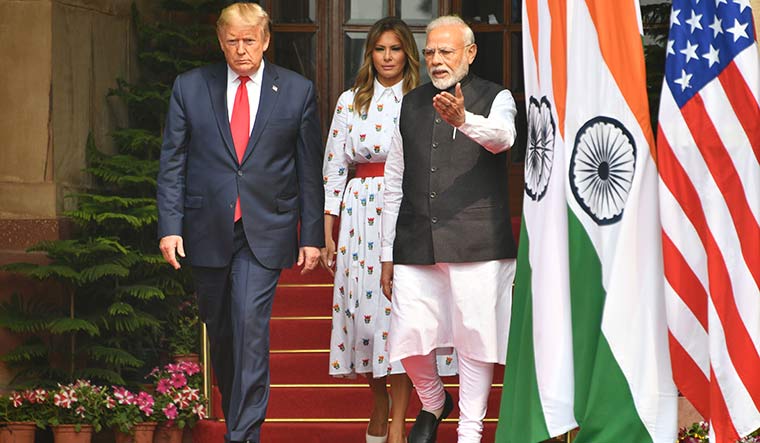Prime Minister Narendra Modi has not spoken to US President Donald Trump since they last had a telephonic gush fest on April 4, on the subject of hydroxychloroquine, top government sources have said.
Trump, in his press conference on Thursday, once again spoke about ongoing border issues at Ladakh between India and China and said that he had spoken to Modi, who was not in a good mood about what's going on with China. “They have a big conflict going with China and India. Two countries with 1.4 billion people. Two countries with very powerful militaries. And India is not happy, and probably China is not happy. But I can tell you, I did speak to Prime Minister Modi. He's not... he's not in a good mood about what's going on with China,'' Trump said in response to a query.
India has made it clear that it does not need a third party to resolve its issues with China. There are several mechanisms in place at the military and diplomatic level between the two nations to resolve any issues on the border that may threaten the peace and tranquillity there.
These mechanisms start with a pact in 1993 on the Agreement of Maintenance of Peace and Tranquillity along the Line of Actual Control. There are similar pacts that were inked in 1996, 2005 and 2012. The last, in 2013, was the Border Defence Cooperation Agreement. In addition, there is an understanding between the two countries, which they call the Astana Consensus, of not letting their differences escalate into disputes. The consensus has been reaffirmed at the informal summits between Modi and Chinese President Xi Jingping at Wuhan (2018) and Chennai (2019). In fact, it was the Astana Consensus that provided the guidelines for resolving the dangerous situation that had evolved in Doklam in 2017 at the Bhutan-China-India trijunction.
Government sources reemphasise that there has been no recent contact between Trump and Modi after April 4. On Friday, ministry of external affairs spokesperson Anurag Srivastava had, in his weekly briefing, said that India was “directly in touch” with the Chinese through established mechanisms and diplomatic means. Srivastava was addressing a query regarding a tweet by Trump, in which he had said he was willing to mediate between the two countries if they wanted it. At his presser on Thursday, Trump again said, “I would do that. You know, I would do that. If they... if they thought it would help if I were the mediator or the arbiter, I would do that. So, we'll see.''
Trump also spoke about his popularity in India, claiming that they liked him in India, certainly more than the media liked him in the US. “And I like Modi, I like your prime minister a lot. He's a great gentleman. A great gentleman.”
Of course, Trump's liking for Modi had not stopped him from threatening “retaliation” when India had stopped the export of hydroxychloroquine and a range of other generic drugs in late March, while it took stock of its own supplies for dealing with the COVID-19 pandemic. At that time, Trump had become convinced that hydroxychloroquine was the silver bullet that would cure the COVID-19 infection and had lashed out against India's decision. India subsequently lifted the ban on several formulations—mainly vitamins and antibiotics—and decided on controlled sale and gifting of hydroxychloroquine and paracetamol. Once the American supply was restored, Trump had gone into a gush, praising India and Modi and the bilateral relationship.
Trump's relationship with China is also in choppy waters right now, with him squarely blaming China for creating the coronavirus, and then hiding facts, which led to the virus spreading across the world as a pandemic.
China has not reacted officially to Trump's mediation offer. But Chinese media has. The Global Times claims the two countries should keep an alert on the US, which exploits every chance it gets to create waves that jeopardise regional peace and order. The newspaper pointed out that the Doklam standoff had been resolved without third-party help.



